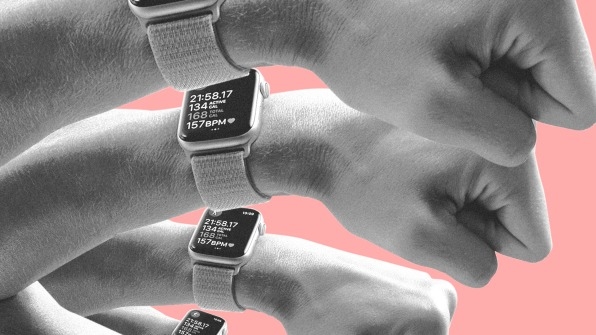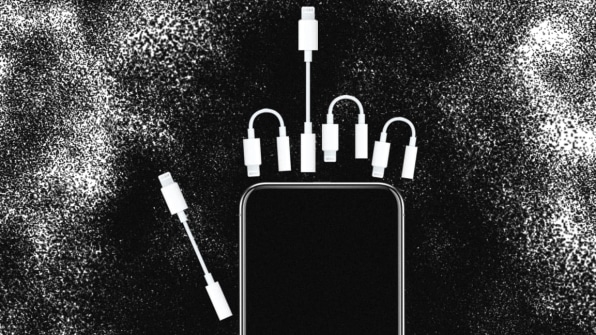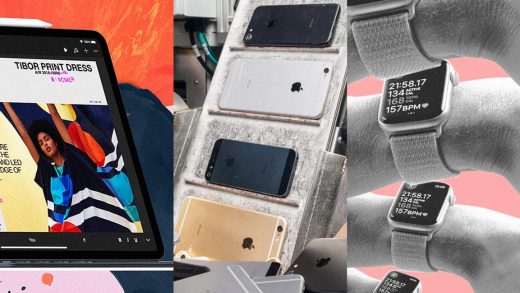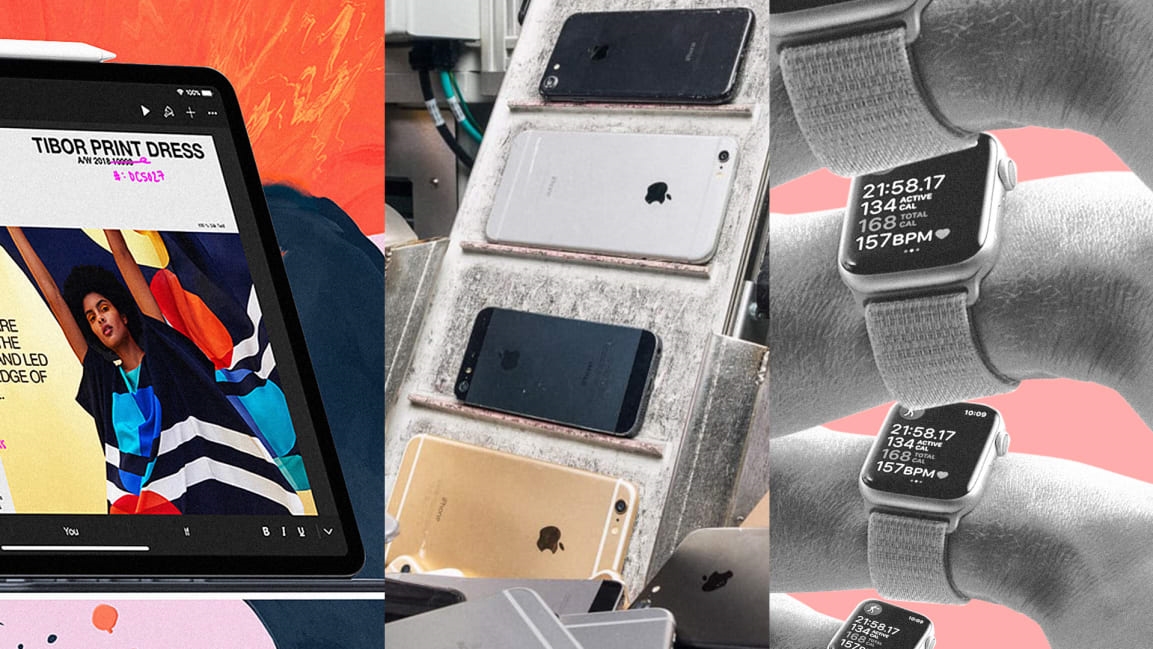What Apple needs to fix in 2019 (and beyond)
2018 was a rocky year for Apple. Despite becoming the world’s first trillion-dollar company this summer, it has seen disappointing sales for the latest iPhone–its main cash cow–and, worse, analysts, industry players, journalists, and users believe that the Cupertino company has stopped innovating in favor of milking its user base with marginally updated products at higher price points. It’s a dangerous game that can go south really fast.
It’s not that the Apple Watch Series 4 or the new iPad Pro are bad products. They are good. But having a couple of good products and a passable phone is not enough in a hyper-competitive market where companies are working on new form factors for phones, computers, and wearables. The gap between Android and the iPhone widens –Apple has dropped to the number three phone manufacturer worldwide. Microsoft is quickly becoming the PC and tablet gold standard. Web services are dominated by Google and Amazon. And hundreds of companies are trying to create the next big thing. If Apple wants to stay on top, Tim Cook and his minions must fix a lot of things and, perhaps more importantly, start taking risks. Here’s the laundry list for 2019.

Streamline the UX across all devices
As Apple’s product line diversified over the past few years, so did the user experience. Apple needs to streamline its UX across all its hardware platforms. iPhone, iPad, Mac, and Watch are all different hardware platforms that feel similar but are remarkably inconsistent at times. And other times, it’s just bad, introducing hidden features and gestures that are only used by experts. It’s not only about keeping a unified graphic appearance–although that’s important, too.
It’s about unifying gestures and UI conventions while keeping it all user-centric, using scientific testing for usability–a UX research process that Apple abandoned a long time ago. If it is successful, all the products in the Apple lineup will offer a seamless intuitive experience, so the user has only to learn one set of conventions rather than dozen.
Look at Microsoft, a company that has focused hard–sometimes painfully so, like the glorious failure of Windows Phone shows–on creating a unified user experience across all its devices. From the operating system to its software programs and its hardware division, the Redmond company wants everything to be consistent. Its goal is to have a UX that scales across all its devices–including its future “phone” product, Andromeda. To do this, it has set standards that allow apps to run in any device’s form factor and adapt to it automatically and consistently. Google is working on the same goal, extending the same user experience from its phones into new types of phones, tablets, computers, wearables, and even cars using apps that can adapt to multiple hardware form factors.
Apple must focus on developing an elegant interface that can truly scale across all its devices, which includes coming up with a coherent laptop-tablet strategy like the Surface.
Fix all the broken crap
Aside from the tired and universally cloned iPhone–which has kept the same candybar design since the iPhone 6 in 2014–Apple hardware can be beautiful. But it also has quality assurance problems that are unacceptable in any product, but especially for its price tags.
The company had multiple quality problems in 2018. Its accessories, one of Apple’s fastest growing profit makers, are especially offensive. The company sells overpriced dongles and cables that may fail within months or weeks of usage. But there have been problems through many of its product lines: iPhone displays that fail, user data lost forever thanks to faulty solid state drives, lousy keyboards in laptops, poor battery life. The fact that the latest iPhone needs almost twice as many repairs as previous iPhones because they are made of glass all around–no matter how allegedly stronger they get every year–doesn’t exactly help quality perception.
Apple’s software and services are no exception. iCloud is a bad joke that Apple has unsuccessfully tried to fix since its introduction. It doesn’t work properly half of the time, with confusing ways to share documents and slow synchronization that often stops working altogether, which is why the tech site Lifehacker advised its readers to stop using iCloud. When you compare it to practically any other cloud service out there, the difference is staggering.
Make one great iPhone
The iPhone XS, supposedly Apple’s latest and greatest phone, has failed to innovate at all. It is essentially the same as the iPhone X: Same substandard battery life, same fragile all-glass body that requires ugly cases, and same notch eyesore on a body from 2014. The iPhone fails the battery life, durability, and aesthetic tests–the golden trifecta.
The fact is that Apple has been releasing the same phone since 2014–with incremental adjustments in the camera, CPU speed, and frothy features like Animojis. But there have been no advance in any of those three crucial aspects that are either truly useful or truly appealing to consumers. Hence the sales slump that has triggered multiple iPhone suppliers to drastically cut component orders. The company has slashed prices of its newest phones and dramatically increased advertising spending.
It’s time to get back to basics and release a single great phone. One that has a two-day battery life instead of this: an iPhone XS lasts 9 hour 41 minutes versus the 14 hours of a Huawei P20 Pro.
It has to be phone that is made of materials that don’t need a case, introducing surfaces that age well like ceramics, leather, carbon fiber, rubber, graphene, or even wood. There are also plenty of really cool polymers. And while we are at it: Why doesn’t Apple let consumers personalize their iPhones like it does with the Apple Watch?
A phone that perhaps can be used with one hand. One that kills Apple’s worst design mistake and uses a new design language, abandoning the rounded Chinese-clone candy bar aesthetic.
Lastly, simplify the phone lineup. I understand the market wants different price points, but having the iPhone 7, 8, XR, and XS in different variations is starting to feel like the late ’90s Macintosh line, which Steve Jobs eliminated because no consumer could understand it.
Having a single amazing iPhone will not only make it easier for consumers to buy, but also turn the product into an event that makes people line up again for days. But unfortunately, according to at least one analyst, it doesn’t seem that Apple will be releasing a radically different iPhone.

Stop trying to milk consumers
The company needs to stop being ludicrous about pricing. Sure, Apple exists to make a profit, but it’s absurd that the company is trying to peddle phones that cost as much as computers with no distinctive advantages to competition from makers like Xiaomi or OnePlus. It’s absurd that Apple is trying to make us pay $70 for a 61 W charger that is rated 1 out of 5 stars when there are much better chargers for $50 rated 4.5 stars. It’s absolutely offensive that Apple is selling $35 USB-C cables rated 2.5 stars out of 5. There are plenty of third parties out there that offer better quality hardware and accessories for a fraction of the price. Apple is counting on the fanboy suckers and its “official product” status to make obscene margins out of poorly built stuff.

Take a risk
Apple needs to resume true innovation. It needs to resist the temptation to add vacuous features and marginal upgrades to its hardware and software–which only leads to diminishing returns–and focus on developing truly breakthrough stuff.
When was the last time anyone said, “Oh wow, Apple did it again!”? Perhaps it was the iPad introduction. The Apple Watch Series 4 health features, like heart rate and ECG monitoring, were close to getting us to that point, but there’s a need for more if the company really wants to leapfrog everyone else once again.
Apple needs to take risks because if it doesn’t, it will be gone, like every other company that stopped innovating once it was at the top.

Go harder on what works
And of course, Apple needs to keep up the good stuff. The company’s stance on privacy–declaring it a fundamental right in opposition to Google and Facebook profiteering on users’ data–is the right one. The company needs to keep making that promise real, as it did in October by allowing people to download their own data, or by standing up to governmental pressure.
It also needs to keep expanding its product recycling strategy. But it needs to stop stifling third-party repair services. Using the aluminum from old recycled products to create new ones reduces their carbon footprint but allowing people to repair products at a low cost is even better for the environment.
In the end, maybe it’s about getting back to its roots and finding its mission again. Not to make the greatest profit. Not to be the most valuable company. It’s time to get back to changing the world one desktop at a time, one pocket and one wrist and one head and one anything at a time. The world needs change. Apple has the billions and the brilliant engineers. Go change it and win 2019.
Fast Company , Read Full Story
(6)



